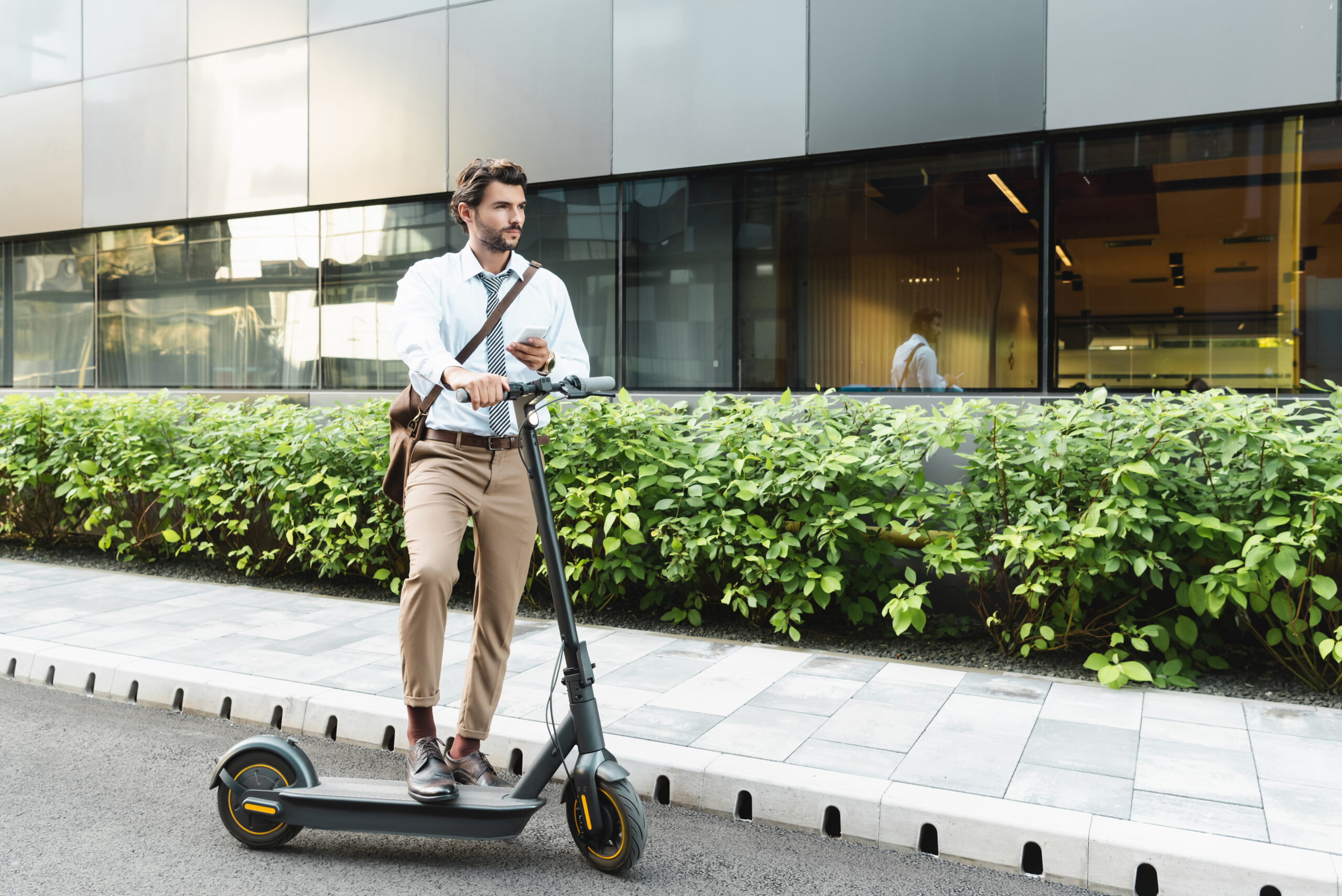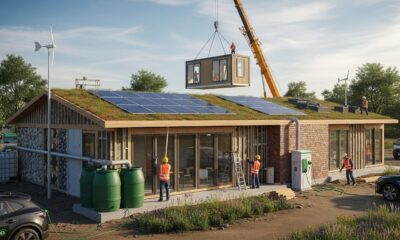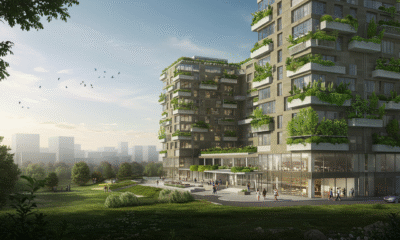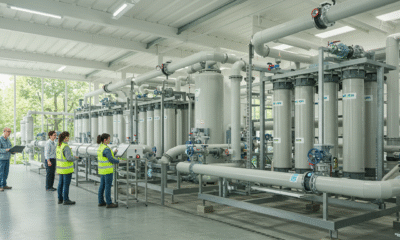We have talked a lot about the growing demand for eco-friendly businesses. Earlier this year, we mentioned some of the steps that green entrepreneurs can take to be successful.
One of the most important things that they can do is invest in eco-friendly buildings. Green buildings are both good for your bottom line and the planet.
In 2023, the world emitted 37.4 billion tonnes of CO2, one of the principal greenhouse gases that has altered our climate over the last century. Collectively, in response to that staggering statistic, homeowners, architects and project managers across Europe are asking one simple question: what can we do to reduce our contribution to climate change? Furthermore, how can our buildings make a tangible positive difference?
The answers to both of those questions are complex and nuanced, but every decision that puts sustainability at the heart of your design, build, renovation or restoration can move the dial towards a brighter future free from the effects of climate change.
Whether you increase the amount of natural light flowing into a living room (and, thus, reduce your reliance on artificial lighting) through the installation of an opening glass roof, or you implement a network of rainwater-capturing technologies, you have the power to improve our chances of reversing climate change whilst also making the building a really lovely place to live and work.
In this article, we will explore how to make a building more sustainable in just six steps. Most of them are innovative, a couple of them are offered by Mother Nature, but – most importantly – all of them can be adopted as part of almost any project you choose.
Let’s start with one of our favourite phrases: Fiat Lux – meaning let there be light!
Step one: Prioritise natural light
According to research commissioned by UK Parliament, the average person spends between 80-90% of their time indoors. That’s as many as 21 out of 24 hours spent between four walls, working or enjoying leisure time, often beneath artificial illumination. While a desk lamp or stylish overhead electric candelabra can certainly serve a purpose, it is certainly no substitute for the many benefits of natural light. Exposure to natural light can make us happier, healthier and more productive – all of which enhance our quality of life.
But what is the best way to introduce natural light into a space? Let’s say that you already have large windows in your primary rooms and your hands are regulatorily tied when it comes to the remaining spaces – what can you do? Our advice is to get creative – consider allowing natural light to flow from the south side of your property to the north by installing glass walls. Alternatively, you might choose to build a glass box extension, in which you can spend the lion’s share of your time, doing so surrounded by beneficial sunlight. If, however, your building is surrounded by high-rise structures in a built-up area, it is the perfect opportunity to install an opening glass roof. We incorporated a glass roof into one of our recent designs and the results were phenomenal – transforming a gloomy and dim living room into a bright and airy space – making a huge difference to the building’s aesthetics and the way visitors experienced it.
Once you have installed larger windows, glass walls and glass roofs, your building will stay brighter for longer, substantially reducing your reliance on artificial light. Because 40% of the UK’s electricity comes from fossil fuels, that reduction in artificial lighting can have a direct bearing on emissions, thus, making your project far more sustainable.
Step two: Install solar panels
As bespoke glazing specialists, we are obsessed with light. Having brought it into your home through innovative concepts like glass walls and roofs, we think it is also a good idea to harvest it using roof-mounted photovoltaic solar panels. In 1975, it cost approximately £94 to produce one watt of solar electricity; almost 50 years later, that figure has been reduced to just 20 pence. While that reduction is staggering, it also illustrates the fact that solar technology is very affordable. It is also very effective at producing clean, low-carbon (nearly zero-carbon) energy. Natural gas, for example, produces 490 grams of CO2 per kilowatt per hour of electricity generated; solar, on the other hand, produces a fragment of that – just 41 grams of CO2 per kilowatt per hour of electricity generated (accounted for mostly as part of the manufacturing stage).
The best bit about harnessing solar energy and turning it into electricity is the fact that the panels can be installed onto the sloping roof of most residential buildings, meaning they can be retrospectively added very easily. The best bit? Solar panels pay for themselves in as little as six years!
Step three: Adopt a low-carbon heating system
It’s not just electricity generation that can limit your building’s sustainability – two-thirds of UK homes rely on gas-fired boilers for their heating, generating more greenhouse gases than all of the country’s power stations combined. But there is a better way of keeping cold British winters at bay – a low-carbon heating system such as a heat pump, which works by extracting heat from the air, ground and even water, and transferring it to wherever it is needed. Research suggests that a heat pump can reduce your household emissions by as much as 53%.
If the idea of lower-CO2 heating appeals to you, realistically you currently have two choices – a ground-source heat pump and an air-source heat pump. The latter takes the form of a box on the side of a building which makes as much noise as your refrigerator. While it may appear a little unsightly, there are several ways that you can disguise it from view, including a stylish wooden enclosure. A ground-source heat pump is largely hidden from view, but its installation is certainly a little more disruptive – requiring the excavation of your garden into which the infrastructure can be installed. Overall, if you were to decide between the two, ground-source heat pumps are usually more energy efficient – especially in places that experience very cold temperatures in winter.
Step four: Install a smart lighting system
We previously discussed the importance of natural light because it reduces your reliance on the artificial alternative – which often relies on electricity generated by fossil fuels. If you are looking for a way to reduce that reliance even further, we would recommend a smart lighting system, one that illuminates your space only when it is being used. You might think that you are pretty good at turning those lights off, but research suggests the average homeowner leaves a light on for approximately three hours every single day. As a nation, the energy wasted by leaving manual lights on could power 125,856 homes for an entire year!
As well as reducing your unnecessary electricity usage (and, as a result, reducing your emissions), a smart lighting system can also make your life significantly easier. Imagine walking into a room that is illuminated simply by your presence (perhaps triggered by a sensor on the doorframe) – gone can be the days of scrabbling around for a light switch and potentially leaving dirty handprints on the walls. You can also say adios to having your hands full and having to either put things down or risk dropping them as you bump your shoulders into the wall to switch on or off the light.
In short, a smart lighting system reduces your electricity usage, your emissions generation and the burden on you to remember to switch everything off when you leave the house.
Step five: Increase natural insulation
A living wall looks great. What we mean by a living wall is a vertical surface that is covered by greenery – typically rows of succulent plants or a thick layer of climbers. Plants, alone, have the uncanny ability to make us feel calm, optimistic and even stronger according to research carried out by hospitals located in the San Francisco Bay area of the USA, so a wall of them is likely to turn any passersby into strong, calm and optimistic superheroes! Speaking of superheroes, aside from the psychological benefits they offer, plants are amazingly good at insulating your building. In fact, despite its ill-deserved reputation of damaging structures, English ivy (Hedera helix) can raise minimum outer-wall temperatures by as much as 3°C, reducing reliance on central heating and limiting temperature fluctuations. Furthermore, in summer, plants on the outside of your building can keep the inside 1.7°C cooler than bare brick, reducing your reliance on air-conditioning too!
We know that English ivy isn’t everyone’s horticultural cup of tea. Instead, you could choose Trachelospermum jasminoides (Star Jasmine) – which is quite slow growing – Clematis armandii, or Pyracantha coccinea – which has sharp modified stems.
Step six: Introduce rainwater harvesting technology
So far, we have spoken exclusively about energy usage, but there is another important component beneath the umbrella of sustainability – water waste. In the UK, 80% of us admit to wasting water regularly (keeping the tap running while brushing our teeth or putting on a full kettle when we only intend to use a small amount, for example). According to Business Waste Management, water waste (alongside leaky pipes) adds up to approximately 3 billion litres of water annually.
Instead of relying on mains water, your building could incorporate rainwater storage tanks, allowing you to keep it for later use. In many gardens across the south of England you will find a water butt – accommodating keen horticulturalists who want to use rain to water their plants throughout the year – and a domestic storage tank works much the same, but filters out dirt, ensuring it is safe for human consumption.
By limiting your water use, you are also reducing the amount of energy necessary to treat the water coming out of your tap – an important consideration because a state-of-the-art treatment facility consumes as much as 45 kWh of electricity.
The fact that you are reading this article is encouraging because it suggests a willingness to make your building more sustainable than would have been the case 50 or even 20 years ago. Attitudes are changing, and designs are too. Whether you want to incorporate a rainwater tank, install smart lighting, improve the availability of natural light or harvest it to generate electricity, your building can play an important role in the fight against climate change.


 Environment10 months ago
Environment10 months agoAre Polymer Banknotes: an Eco-Friendly Trend or a Groundswell?

 Environment12 months ago
Environment12 months agoEco-Friendly Home Improvements: Top 7 Upgrades for 2025

 Features9 months ago
Features9 months agoEco-Friendly Cryptocurrencies: Sustainable Investment Choices

 Features10 months ago
Features10 months agoEco-Friendly Crypto Traders Must Find the Right Exchange






























